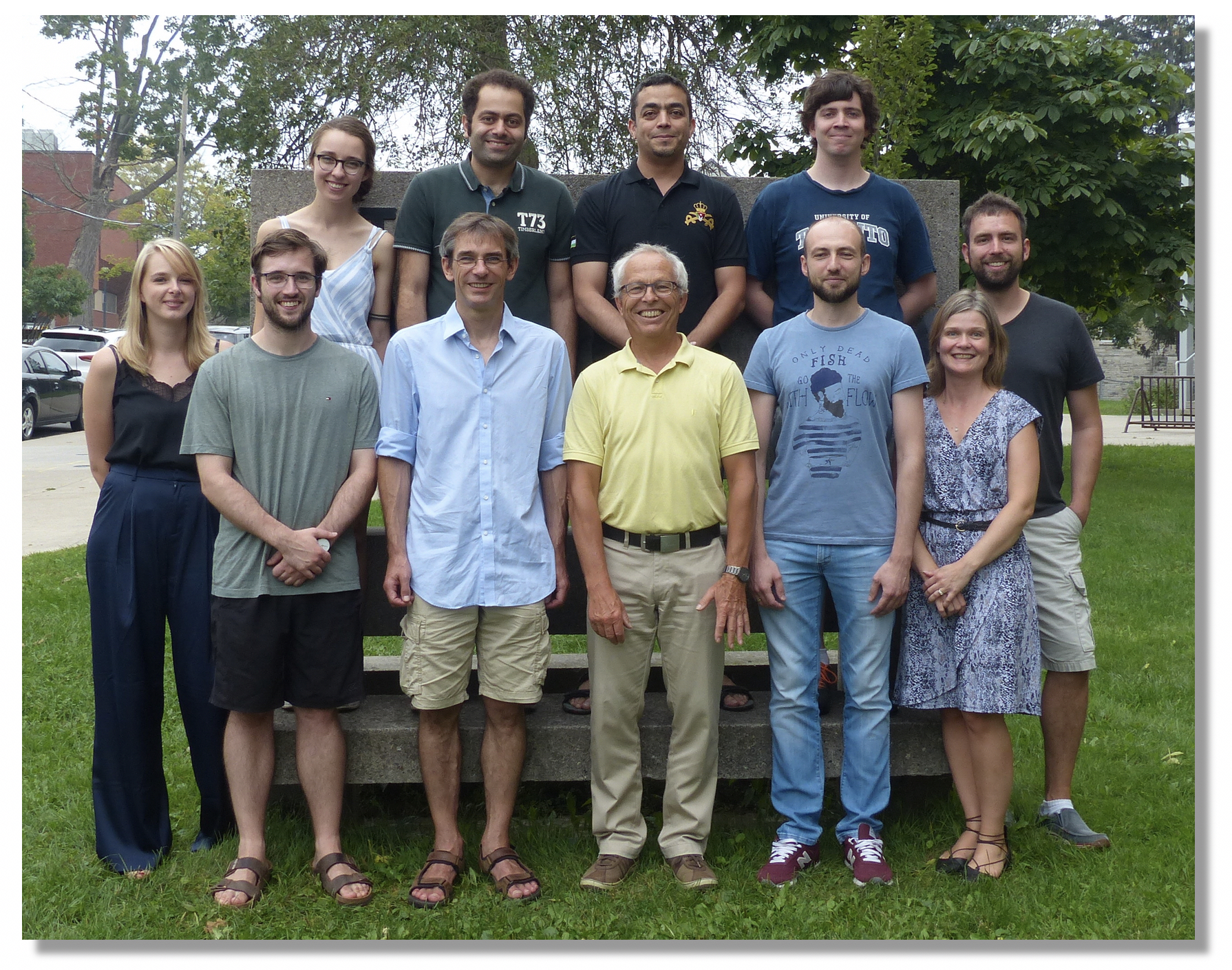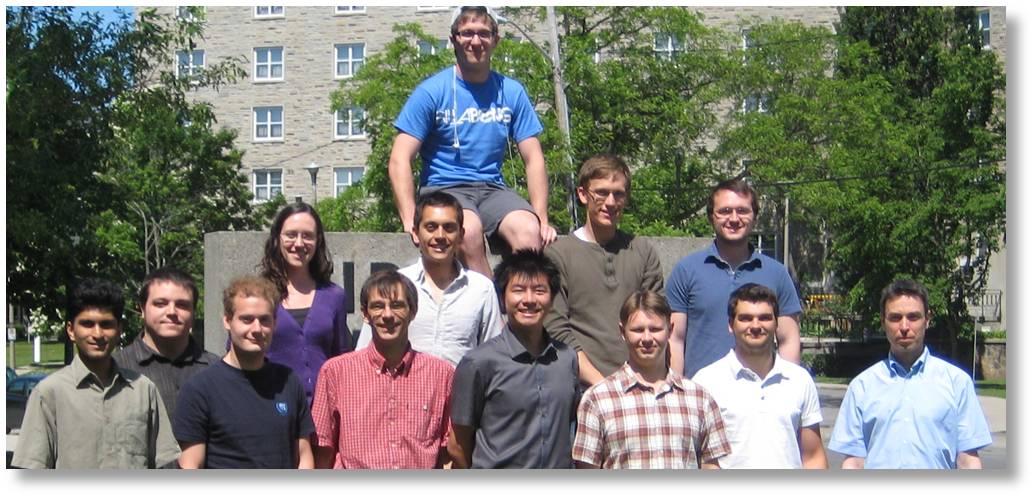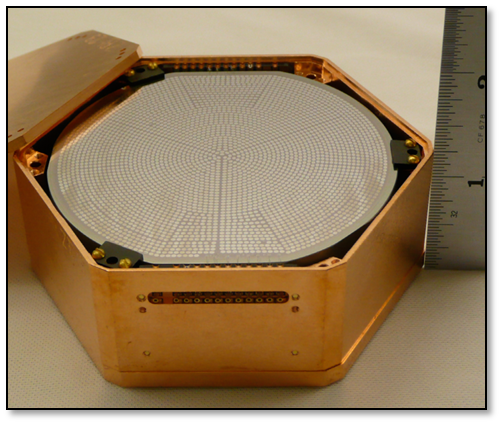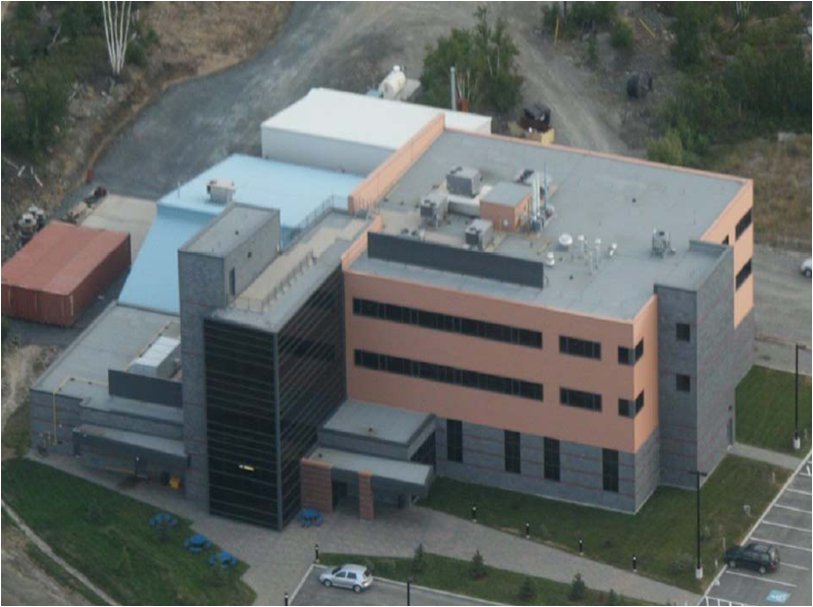
SuperCDMS group - Summer 2018

SuperCDMS group - Summer 2011

| It is known since the 1930's that a significant part of the mass of the universe is invisible. This invisible material has been named Dark Matter. Weakly Interacting Massive Particles (WIMPs) are considered as one of the most convincing explanation for this phenomenon. |
 Rotation curve of a spiral galaxy - evidence for dark matter |
 SuperCDMS detector | SuperCDMS is an experiment searching for direct interactions of such WIMPs with normal matter. For this purpose we build and deploy very sensitive particle detectors in underground laboratories. Our detectors are operated at very low temperatures (roughly -273 C or 40 mK or 4/100 of a degree above the lowest possible temperature), hence the name Cryogenic Dark Matter Search (CDMS). |
 Soudan - Elevator to Underground Lab | Presently the experiment is located at the Soudan underground laboratory in Soudan in northern Minnesota. We plan to move to SNOLAB, the newly established underground laboratory near Sudbury, Ontario. |
 SNOLAB Surface Building |
|
At Queen's we have installed a facility In order to determine if a potential dark matter signal is real or was caused by some unexpected background radiation or to test some non-standard hypotheses about dark matter WIMPs it may be of advantage to use detectors produced from different materials. At Queen's we installed a facility which allows us to study optical properties at low temperatures of materials which may be used for future scintillating dark matter detectors. The SuperCDMS Collaboration includes members from 20 different institutions from North America and Europe. In Canada, SuperCDMS is represented at Queen's and at UBC. We are exploring options to expand our collaboration and join forces with EURECA, a European project for the search for dark matter particles with cryogenic detectors. |